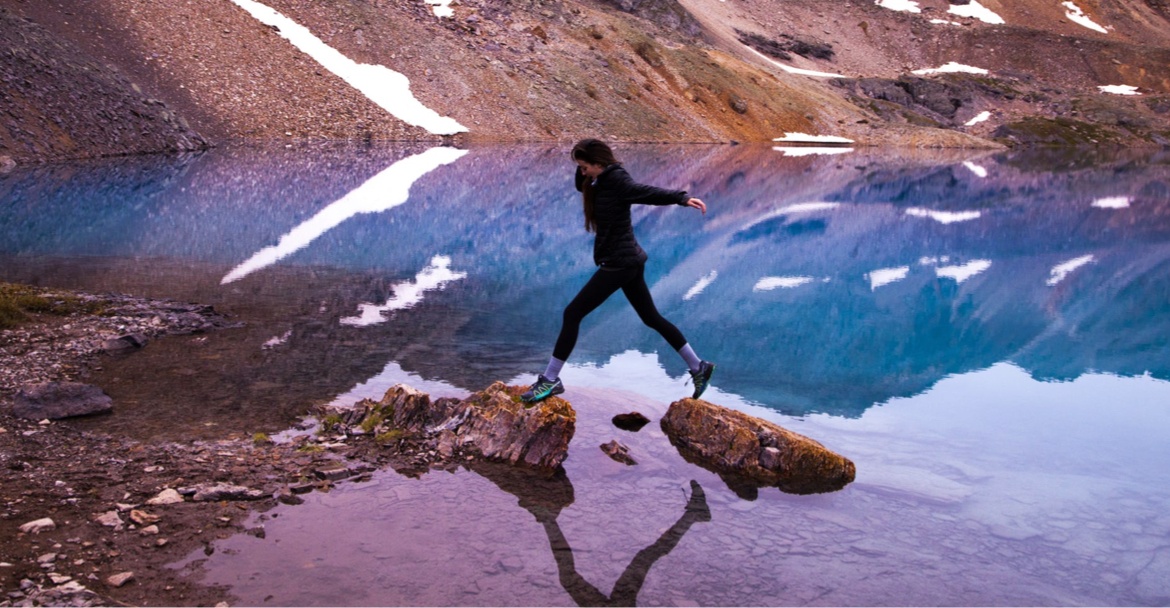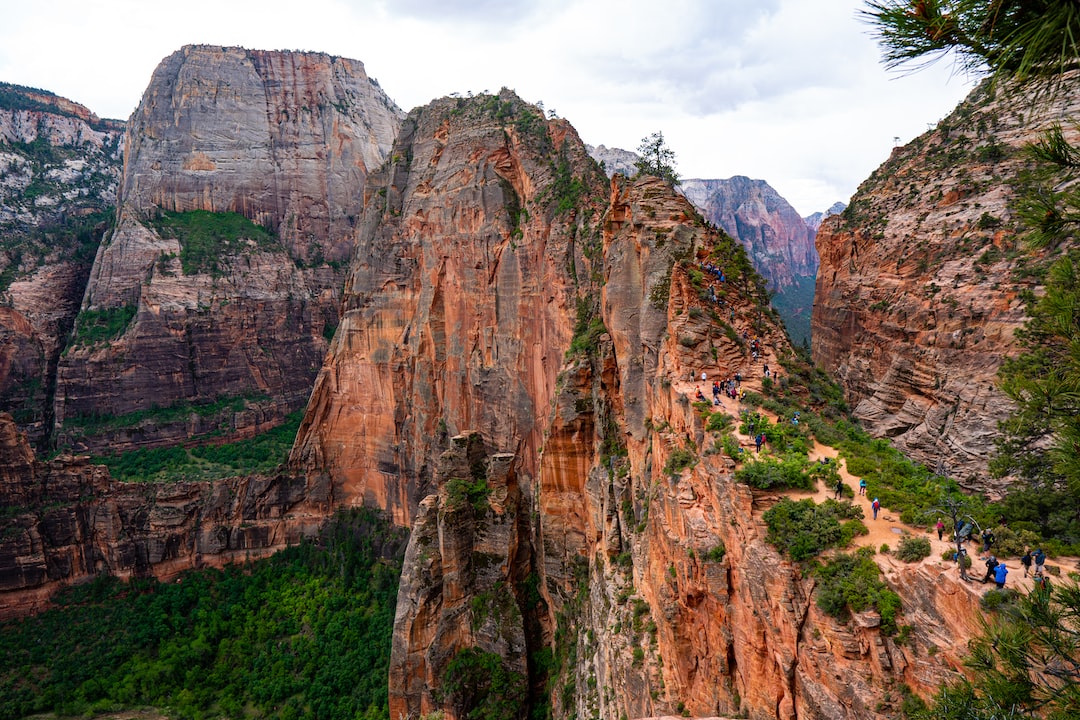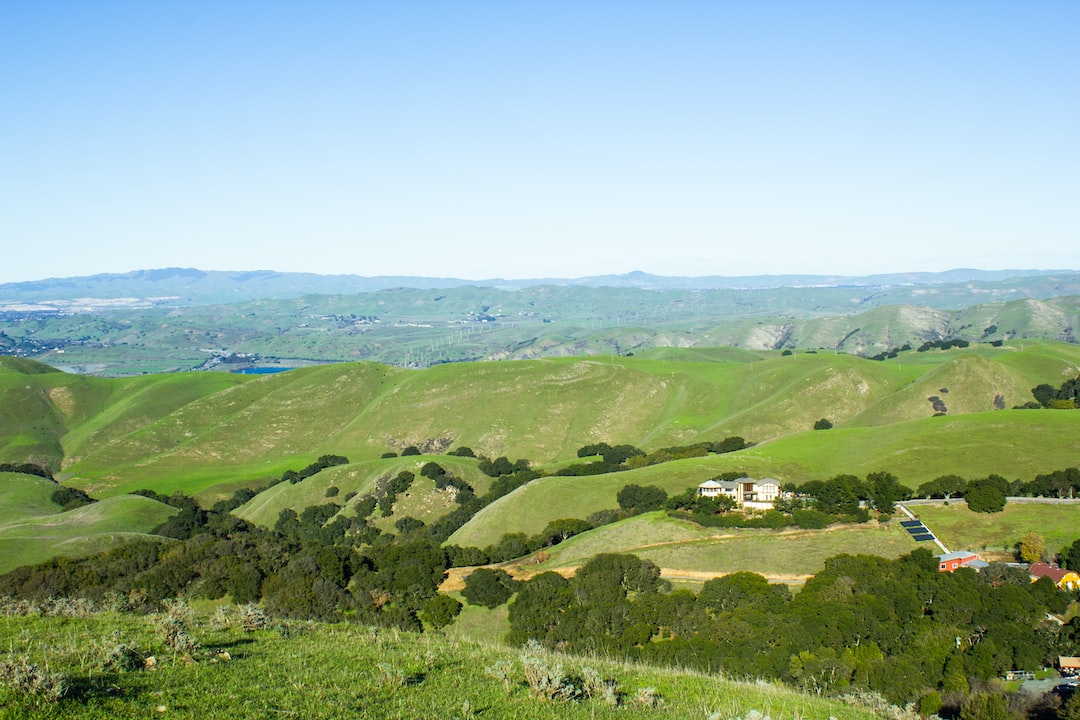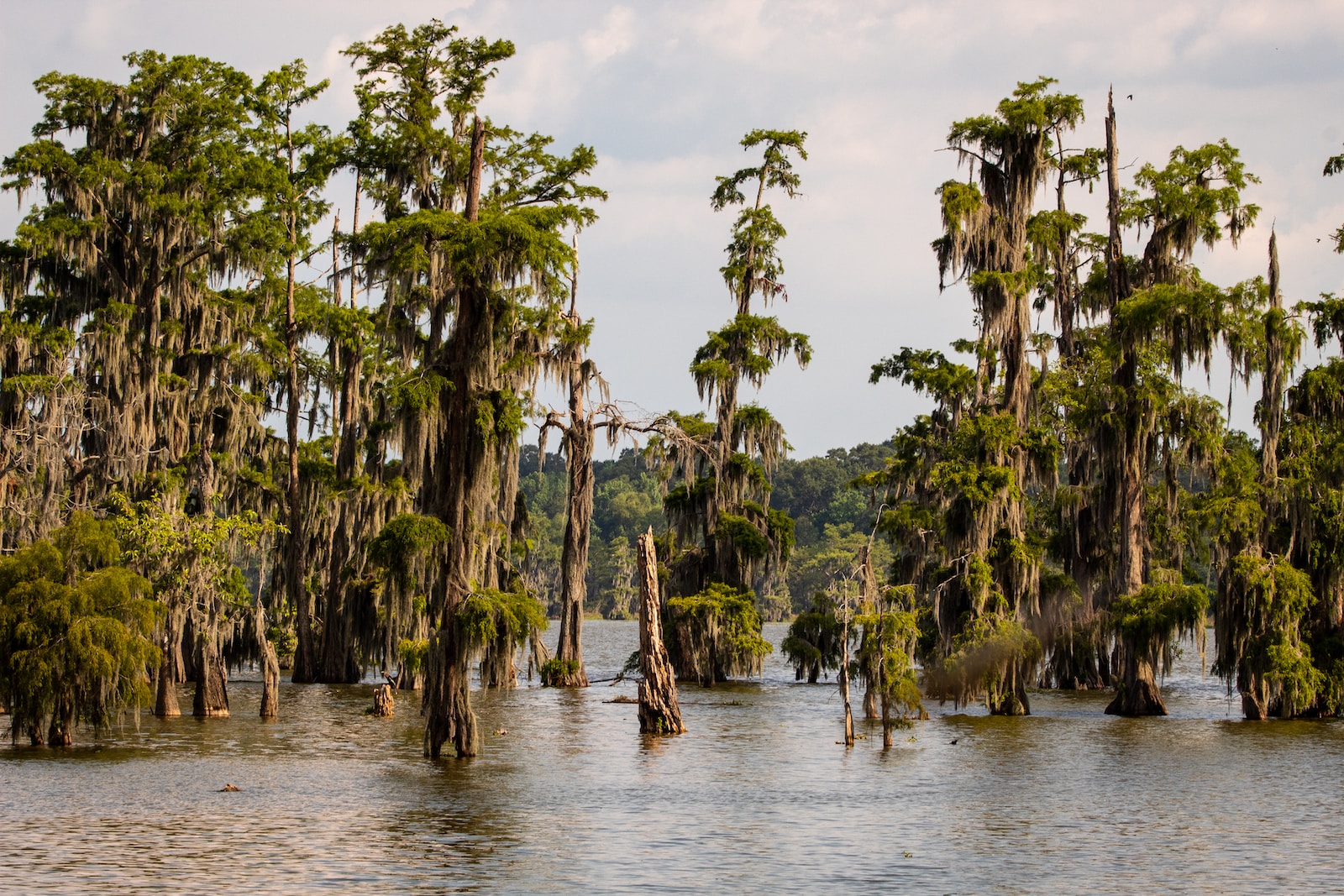It’s perhaps the most important question on the minds of many new and experienced hikers – exactly how much water should I bring on my next hike?
On an average hike in 20°C (68°F) weather, you should expect to drink 0.5-1 liters (2-4 cups) per hour. However the exact amount of water you’ll need depends on how efficient your kidneys are, how hot and humid the climate is and how many water sources are available along your route.
In warmer weather or if you’re sweating heavily you’ll want to drink more to replace the lost fluid.
What color is your pee?
Every hiker is different and over time you’ll get to know how much water you’ll need in different conditions. The best way to check if your drinking enough water is to look at the color of your pee.
A clear sign that you’re drinking enough water is your urine should be straw color or pale yellow. If it’s darker then you will likely benefit from drinking more water and if it is clear then you’re drinking plenty.
Planning how much water to bring
Water is usually ones of the heaviest items in our backpack (- along with tents, sleeping bags, and stoves.) and with many hikers preferring to pack light and have less weight on their shoulders – choosing how much water to bring can be a real challenge.
No one wants to bring so much excess water that their packs are weighed down and yet on the other end it can be dangerous and even a fatal mistake to not pack enough water with you.
The key is to plan your route and be aware of any water sources that may be en route. For most hikers, there will be a stream, a creek or a water source that can be used to fill up water filters – for others hiking in the desert or in dry conditions there may be no water sources – and so you will need to bring all your water with you.
Bring a water filter
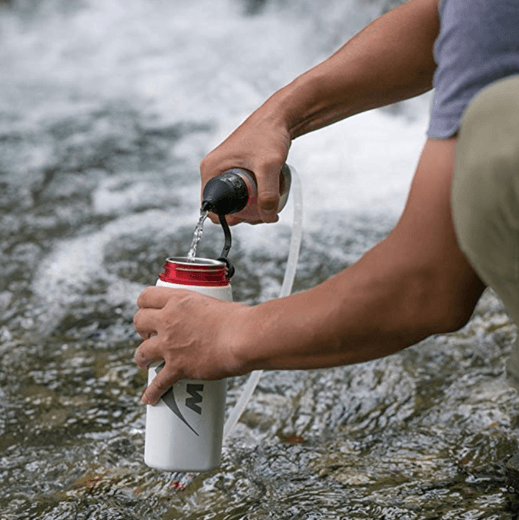 Most hikers and backpackers will benefit enormously from carrying a water filter or purifier. This will allow you to top up all your water bottles en route and means you can pack less water but be confident that you’ll stay properly hydrated.
Most hikers and backpackers will benefit enormously from carrying a water filter or purifier. This will allow you to top up all your water bottles en route and means you can pack less water but be confident that you’ll stay properly hydrated.
Water filter technology has been improving rapidly and there are some amazing lightweight filters that make collecting and purifying water super simple and easy to do.
⚠️Be aware that many water sources are not available all year round. Only rely on a water source if you’re positive it has enough water in it to get you through your hike.
From the ultra-minimalist water bottles with built-in filters to the high powered water pumps like the MRS trailshot (read my review) that will create 1 liter of fresh filtered water every minute.
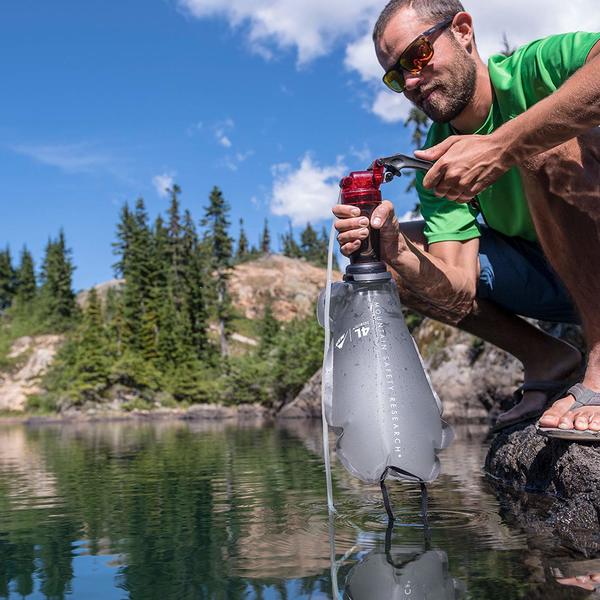 Water filters are pretty incredible, they make most river or creek water (that’s not been contaminated with heavy metals or industrial pollution) relatively safe to drink.
Water filters are pretty incredible, they make most river or creek water (that’s not been contaminated with heavy metals or industrial pollution) relatively safe to drink.
For higher risk areas opt for a water purifier like the MSR MiniWorks Ex Microfilter (read my review) which not only filters our bacteria and particles of sediment, but also the much smaller viruses.
P.S I wrote an entire buyers guide to water filters looking at the major differences between filters and how to decide on the best one for you – for high capacity to ultralight (prices range from $30-300).
I can still remember the first time I used a water filter…I stopped at a stream and pumped 2 liters of water into my platypus hydration system. It was one of the most liberating moments I’ve ever experienced hiking! I knew from then on, that the distance I could hike in a day would never be limited by the amount of water I could carry in my pack.
Nick from Hiking Ambition
How long will you be hiking?
At a minimum, you’ll want to have at least a few liters of water in your backpack to take you through your hike. If you’re planning a multi-day backpacking trip then you’ll likely need a water filter (more on that above) to allow you to top up our bottles during your journey.
The average moderately fit hiker will manage to walk around 3mph (or 20minutes per mile). For steeper or rockier terrain this will take longer whereas flat sections could be walked at a brisk pace of 5mph.
Formula for calculating water consumption
If your day hike is 12 miles and if your walking at an average pace of 3mph and you stop for one hour for lunch and breaks throughout the day. We can say that you’ll need 5 hours to walk this distance and so five hours worth of water.
- Distance / Speed = Time + (Rest time) = Total hike time
- 12 miles / 3mph = 4 hours + (Rest time) = 5hr
If we take the 0.5-1 liter (2-4 cup) per hour average, on the conservative end we can say bring 5 liters (21 cups) of water.
- Hike time x water consumption = Total water needed
- 5 hours x 1 liters per hour = 5 liters
This formula is based on averages, but you should adjust it to match your water needs and to account for the weather on the day and the difficulty of the hike – the more extraneous it is the more water you’ll need.
If you’re confident that there are at least two water sources en route where you can use your filter – then you could bring just 3 liters of water (the lower end of your water needs 2.5 liters + 0.5 liters safety net).
It’s always better to have some water left over at the end of your hike than to run out a few miles before the end of the day. At best it can be uncomfortable and at worst it could be deadly.
Factors that affect hydration
Temperature ?
The hotter it is the more you will be sweating and losing fluids from your body. To replace these lost fluids you need to be drinking more than you would otherwise be drinking. So in warmer weather, you may need to increase your water consumption to 1-1.5 liters (4-6 cups) per hour of hiking.
Even in cold temperatures your body still sweats and staying hydrated in just as important. If you have a backpacking stove with you then you can use it to melt snow in an emergency or fill up your water bottle and keep it inside of your jacket to melt.
Humidity ?
When the air is saturated with water, it takes longer for sweat to evaporate from your skin – which makes the body’s natural cooling mechanism less effective and your core temperature heats up (source) making you sweat even more. In humid conditions, you need to be aware to drink more water to replace the lost fluid.
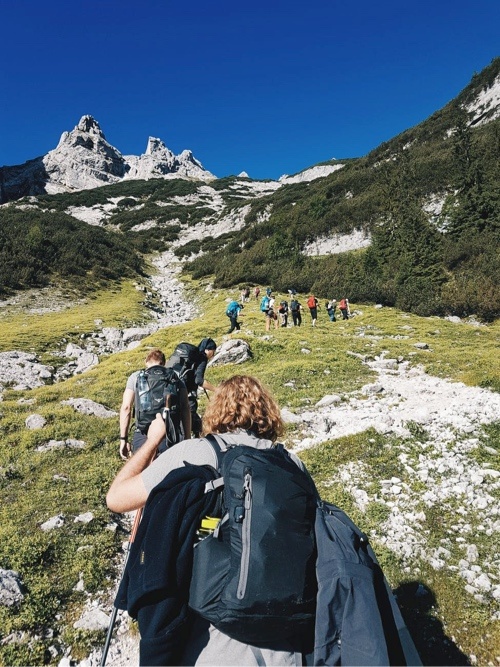 Hike Difficulty
Hike Difficulty
Hikes that are continuously uphill or across open areas with no shade are going to be more difficult for the body. Your muscles will be burning more calories and you’ll be pushing your body harder. The harder the hike the more water you will need to stay hydrated.
Salt levels
Snacking on high calories food like nuts is often encouraged and I myself love to get my fill of Macadamia’s and roasted Cashews – but beware that consuming too much salt can make you really thirsty and lead yo to prematurely drink your supply of water. Try to drink your water slowly and be mindful of spreading it how throughout the day, rather than guzzling 1 liter and then peeing it all out in the next hour.
The USDA recommends no more than a teaspoon (2,400 mg) of sodium per day, maybe a bit more when you’re sweating heavily.
Backpacker
That said if you’re sweating alot and in a humid climate then having a bit of extra salt is a good thing – just be mindful of your consumption.
What you’re wearing
Wearing the right clothes for the climate is important while hiking. Too restrictive or materials that
Symptoms of dehydration
Common telltale signs that you need to drink more water often include the following:
- Dry mouth and lips
- Dizziness
- Tiredness
- Lack of concentration
- Thirst!
If dehydration is left untreated it come become dangerous, so the key is to stay properly hydrated – it will make hiking much more fun.
You can drink too much water ⚠️
There is a risk of drinking too much water which can be dangerous if you excessively over-hydrate.
Over-hydration is rare, but in extreme cases, it can lead to water intoxication or hyponatremia– when the electrolytes in the body are moved beyond their safe limits (source).
To exceed the body’s ability to excrete water, a young adult with normal kidney function would have to drink more than 6 gallons of water a day on a regular basis.
Overhydration. James Lewis MD. Source.
Those most at risk are extreme marathon runners and hikers who overcompensate by drinking too much.
If your pee is clear and you have no thirst and you have been drinking lots of water – take a break and don’t consume fluids until you feel thirsty.
Drinking too much water is not a concern for most hikers and usually, the opposite is true, but it is worth noting and something you should be aware of.
Why is water so important?
The human body relies on water for many of its vital functions and 50-60% of our body weight comes primarily from water (source).
Water helps us in all sorts of ways from creating saliva to breaks down solid fuel to lubricating our joints and tissues (source).
Final thoughts
Having enough water is crucial for your enjoyment and in some cases your survival. Here are the key takeaways to remember for your next outdoor adventure:
- Always plan your route and hike with more than enough water to see you through the trip.
- Bring a lightweight water filter with you to use as a backup and to collect water as you go.
- Don’t assume that water sources are available year round.
- Stay hydrated and drink plenty of water (but don’t over-hydrate).
- Be aware of how much salt your consuming and don’t overdo it.

